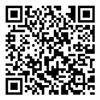Specific Solutions
Translation of English Papers and Foreign Literature: Formatting and Requirements
The translation of English papers and foreign literature into Chinese has become a significant aspect of academic and professional communication in today’s globalized world. It allows non-English speaking scholars, researchers, and professionals to engage with the vast amount of global knowledge available in English and other foreign languages. However, translating academic texts requires careful attention to both linguistic accuracy and formatting standards, as the translated text must maintain the integrity of the original while adhering to Chinese academic standards.
1. Linguistic Precision and Accuracy
When translating English papers or foreign literature into Chinese, the translator must prioritize accuracy and clarity. This includes not only translating the words but also interpreting the meaning, context, and tone of the original text. The translation must reflect the scholarly nature of the text, preserving the technical terms, academic style, and the intended message of the author.
A direct, word-for-word translation is often not sufficient, especially for complex academic concepts. In many cases, the translator must ensure that the text flows naturally in Chinese while maintaining the essence of the original work. This requires familiarity with both the source language (English or another foreign language) and the subject matter.
2. Technical and Subject-Specific Terminology
In academic papers and foreign literature, the use of specialized terminology is common. Whether the topic is scientific, medical, legal, or technological, it is crucial for the translator to understand and accurately translate technical terms. Mistranslation of terminology can significantly alter the meaning of the paper and lead to confusion or misinterpretation.
When translating academic documents, the translator should use standard and widely recognized Chinese equivalents for technical terms. If no direct equivalent exists, the translator should provide an explanation or footnotes to clarify the term for the reader.
3. Formatting Requirements for Chinese Academic Papers
The format of a Chinese academic paper often differs from that of an English paper, especially in terms of structure and citation style. Translators must ensure that the translated text adheres to Chinese academic standards.
Title and Abstract:
The title of the translated paper should be presented clearly, ideally maintaining the original meaning. The abstract should be concise, accurately summarizing the key points and objectives of the paper.
Headings and Subheadings:
The organization of the paper is important in academic writing. Headings and subheadings should follow a hierarchical structure, usually marked by different levels (e.g., primary headings, secondary headings). In Chinese academic papers, these headings are often numbered or formatted differently from English papers.
Reference and Citation Style:
In China, citation styles vary depending on the discipline. The most common citation styles include the GB/T 7714 standard for Chinese-language academic papers. Translators should ensure that all references are properly translated, and the citation format follows the specific requirements of the journal, academic institution, or research field.
Font and Layout:
Chinese academic papers typically use a different font and line spacing compared to English-language papers. The most commonly used fonts are SimSun or Microsoft YaHei, and the text is often formatted with a 1.5-line spacing. Translators should ensure that the translated document matches these formatting conventions.
4. Cultural and Stylistic Considerations
The translator must also consider cultural differences in academic writing between English-speaking and Chinese-speaking countries. In Chinese academic writing, the tone is often more formal and indirect than in English. Additionally, Chinese papers tend to be more concise, avoiding excessive elaboration. The translator must be aware of these stylistic differences and adapt the translation accordingly.
Furthermore, many Chinese academic papers follow a more rigid structure, often with an introduction, literature review, methodology, results, and conclusion. These sections should be clearly distinguished in the translation.
5. Quality Assurance and Proofreading
Before submitting a translated paper or literature, proofreading is crucial. Translators should thoroughly review the text to ensure that no errors, inconsistencies, or misunderstandings have occurred during the translation process. In many cases, a second translator or an expert in the field should review the translation to guarantee both accuracy and adherence to formatting standards.
Conclusion
Translating English papers and foreign literature into Chinese is an essential skill for researchers and academics wishing to engage with global knowledge. By focusing on linguistic accuracy, understanding technical terminology, and following Chinese academic formatting requirements, translators can ensure that the translated work meets the highest academic standards. Professional translation services, which include both linguistic expertise and familiarity with academic requirements, play a critical role in making foreign research accessible to Chinese-speaking scholars.
Keywords: English to Chinese translation, academic paper translation, foreign literature translation, technical terminology, Chinese formatting standards, citation style, linguistic accuracy, academic translation services.


















